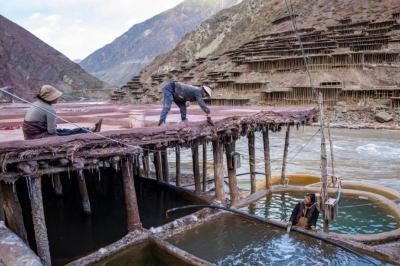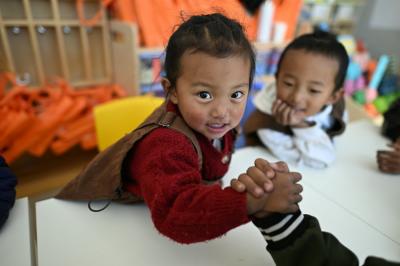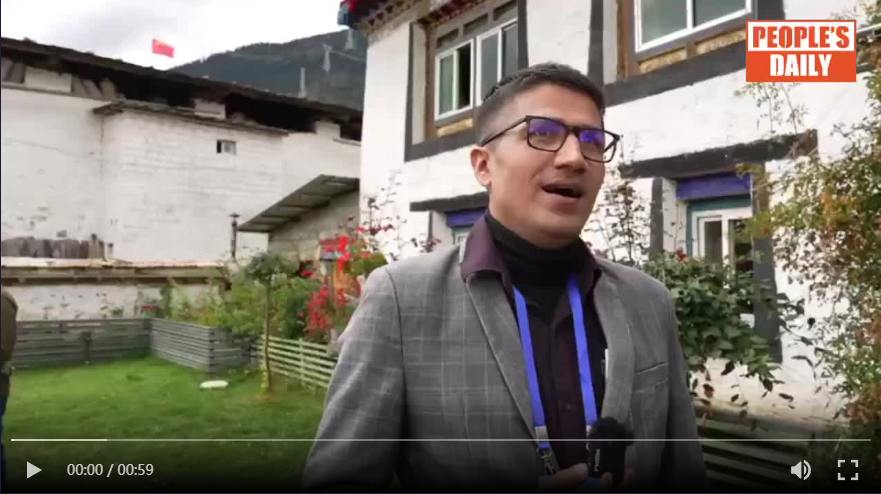| Editor's note: The Sichuan-Tibet Plateau, a beautiful region that reaches toward the heavens, is a place showered with blue skies, covered in white clouds, and dotted with snow-covered mountains, but recently, something truly remarkable has been materializing among the households that call this place home. A groundbreaking historic change has been reshaping the land and its people. From today on, we will publish a series of stories to tell you those changes.
Nov.10,2017-- Just as rivers and valleys can quickly turn into grassland when travelling, the village’s nomadic life has shifted to something completely foreign and new. Tents and mud houses have turned into bright and spacious brick structures, and all of this has happened in the blink of an eye. The red rooves and white walls are a pleasant accompaniment to the neat and clean asphalt roads, and today, perhaps one of the most difficult challenges for locals is trying to figure out how to furnish and redecorate everything. Laughter pours out from inside each structure. The five-year plan has helped the people tremendously, but it still requires the participation of major marketing entities and resources to be used as assets in order to be considered a true and final success.
Today, Tashi, a herder, has already taken his yaks out to graze and is now returning to his new home to drink some butter tea.
Muya Zeduo has leased 49 unoccupied houses to herders through a package program. Each house is equipped with advanced electric appliances and bathroom facilities, and when talking with him about what he thinks, Tashi does not hesitate to say, “Our lives today are nothing like they used to be. I first leased my own house to the company, and since they redecorated everything, I am now earning money just to stay at home!” The company is supported by the government in its efforts to promote the Muya culture centered at Eda Menpa, and so it renovated the previously substandard houses into inns for tourists. Parking lots and vehicle service areas are now offered to people driving along the nearby highway, and shops selling Tibetan specialties are scattered here and there along the road. Everything is done through the village collective.
The tourist attraction uses a tri-part cooperative model as its basis, with the three points being the government, company, and village. Tourism allows the locals to target poverty head on, and projects centered on poverty relief bring the advantages of local culture and nearby resources together as part of one formulated plan. The venue itself includes the Muya town, a tourist service center, family-based inns, roads, and observation decks. To maximize profits for villagers, local labor is used throughout the entire construction process. In 2015 alone, there was a total of 360 thousand yuan earned by casual laborers, with the village transportation team earning a total of 750 thousand.
To balance local resource development and the pragmatic profits of local villagers, Muya Zeduo puts forward 400 thousand yuan each year to purchase medical insurance for herders living in Eda Menpa, and also provides pensions for elderly villagers so that these villagers do not have to worry about their futures and can focus more on doing what they can to improve the local attraction. There is also heavy emphasis put on training local talents, particularly from the younger generations, to prepare them to undertake administrative and managerial positions within nearby businesses and also provide them with the knowledge and skills needed to function better within the tourism industry. In October 2015, the United Front Work Department of Sichuan Province coordinated with the Chinese Vocational Education Society (Sichuan branch) to hold a one-month tourism training program, which included training in speaking Mandarin Chinese and professional advice regarding tourism, all ending with a two-year follow-up program. These initiatives aimed to equip poverty-stricken villagers with the tools necessary to generate wealth while also enjoying bonuses from shared resources. To date, 48 herders have already been employed, and the idea that one person can be employed and bring his or her family out of poverty has become an attainable reality. |
- Home
- News Tibet |Exclusive |China |World |Related News |Latest
- Documents White Papers |Others
- Photo Politics |Economy & Society |Culture & Religion |Human & Nature |Beautiful Tibet |Other Tibetan-Inhabited Area |Exchanges |Related
- Video News |Documentary |Micro-Video |Entertainment
- Art
- Tourism
- In Focus
- About Tibet






